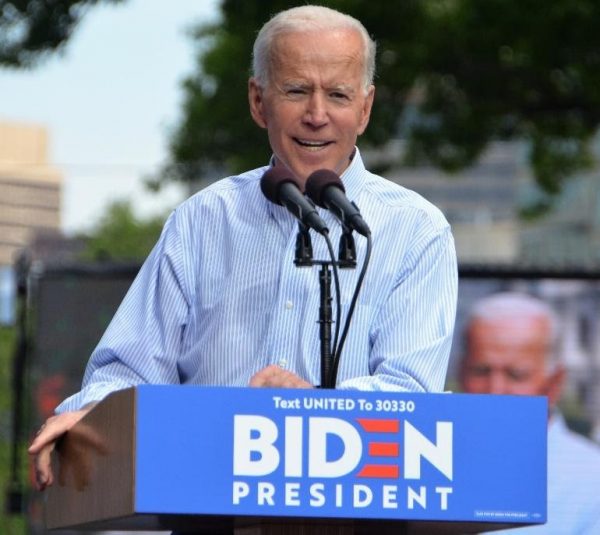
Tomorrow, US citizens head to the polls in an era-defining election which will see Democratic challenger and former Vice President Joe Biden seeking to end a tumultuous four year Donald Trump administration.
It has been dubbed a ‘referendum on Trump’s handling of coronavirus’ and the president has held rallies in major swing states on a final campaign blitz.
What are the polls saying?
In a state where Biden holds a slender lead, the President will be looking to narrow the gap between him and the former Vice President who is as much as 14 points ahead in some polls.
The Guardian Poll tracker, which tracks polls in eight swing states, currently gives Biden an 8.8 percentage point lead.
Speaking to Sky News Australia earlier this week, James Brown, Non-resident fellow from the U.S Studies Centre at the University of Sydney, suggested that it was “Joe Biden’s race to lose”, with the “general trend being clear that Biden is leading among voters”.

Early voting figures have reinforced this view amongst political scientists and commentators alike, with approximately 49% of early votes by people who previously voted Democrat, whereas Republican numbers stand at only 28%. The remaining votes cast are by independent or newly registered voters.
Some have suggested that the voter enthusiasm, reflected in the higher turnout, is as a result of Americans wanting to get rid of Donald Trump, rather than a demonstration of their support for Joe Biden.
Biden’s apparent lack of an adequately funded plan for office, along with the belief held by some that many of his proposals are lip service, may undercut his support amongst undecided Americans.
Despite trends, many polls could be understating Trump’s position, whilst overstating Biden’s lead. Many commentators and voters are understandably wary of the polls, after many falsely predicted the outcome in 2016. Professor Joe Siracusa, an American politics specialist in Melbourne, Australia, shared this concern, saying the polls were “as faulty now as they were in 2016”.
However, the New Statesman’s Ben Walker argues “it is unlikely the same mistakes will be made again with pollsters using more reliable indicators such as education and race instead of income to gauge voting intention”.
High Turnout expected
Perhaps the most significant aspect of voting so far has been that over 70 million votes have already been cast, accounting for more than half of the turnout in 2016, which stood at 139 million. Speaking to CBC, Political Scientist Cal Jilson, from Southern Methodist University, estimates a 40% increase in turnout. It is also expected to be the biggest for over 100 years.
Brown suggested that “people are more likely to vote early when they are angry with the incumbent”. In Texas over 5 million ballots (more than half of the 2016 Texan turnout) have already been cast.
This is perhaps significant when we consider that Texas has not returned a Democrat majority in the Electoral college since Jimmy Carter was elected in 1976.
The Biden campaign is also running TV ads in the Lone Star State, with Vice-President nominee Kamala Harris expected to visit in the days running up to November 3rd. The energy towards Texas from the Biden campaign demonstrates confidence that the Democrats believe they have a real chance of breaking Republican dominance there.
Trump won Texas by the smallest majority since 1996. Republican Senator Ted Cruz also only retained his seat there by 2.6% in the 2018 Mid-terms.
With polls giving Trump as little as a 5% lead and some even indicating a lead for Biden, the Trump campaign cannot be assured of a victory in the former stronghold.
Texas could, as it consistently did many decades ago, prove to be key, with its Presidential Electors potentially deciding whether Donald Trump is returned to the White House for a second term.







